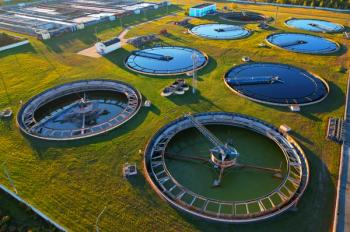
revHILIC: A New 2D-LC Tool for Life Science Analysis?
A recently published study explores and potential and limitations of reversed hydrophilic interaction liquid chromatography.
A team of researchers recently set out to explore the potential and limitations of reversed hydrophilic interaction liquid chromatography (revHILIC) compared to other chromatographic techniques for the analysis of small molecules and peptides. The team published their findings online in the May 2023 edition of Molecules (1). The authors — Davy Guillarme from the University of Geneva, Switzerland with Soraya Chapel, Florent Rouviere and Sabine Heinisch from the University of Lyon, France — defined RevHILIC as a technique where a very polar stationary phase, such as bare silica, is used under gradient elution conditions with the mobile phase increasing from a low concentration of acetonitrile (1-5%) to a higher concentration (40%).
The primary aim of this research was to compare the capabilities of revHILIC with reversed-phase liquid chromatography (RPLC) and hydrophilic interaction chromatography (HILIC). The team initially evaluated the retention behavior of revHILIC against RPLC and HILIC using mixtures of peptides and pharmaceutical compounds. Results indicated that selectivity for RPLC was greater than revHILIC, which was greater than HILIC for both sample types.
The researcher then explored the possibilities of incorporating revHILIC into two-dimensional liquid chromatography (2D-LC) configurations by combining RPLC, revHILIC, or HILIC with RPLC in an on-line comprehensive (LC × LC) mode. The researchers reported that revHILIC × RPLC combination exhibited remarkable performance in terms of peak capacity and sensitivity, providing not only impressive results but also complementary selectivity compared to the more conventional RPLC × RPLC and HILIC × RPLC setups. The elution order and retention time range varied significantly between the three techniques, affirming the potential of revHILIC as a viable option for 2D-LC analysis of small molecules and peptides, according to the researchers.
For 2D-LC analyses, the researchers investigated RPLC, HILIC, or revHILIC in the first dimension, coupled with RPLC in the second dimension. The revHILIC × RPLC configuration demonstrated superior performance with increased peak capacity and sensitivity compared to HILIC × RPLC. The effective peak capacity of revHILIC × RPLC and RPLC × RPLC exhibited a substantial enhancement, showcasing a potential increase of around 70% and 160%, respectively. Additionally, sensitivity saw a notable improvement of 6 to 8 times in revHILIC × RPLC compared to HILIC × RPLC.
The researchers concluded that revHILIC, under gradient conditions, is a potentially useful strategy for the analysis of small drugs and peptides and could be considered for on-line LC × LC applications for applications in life science analysis.
This article was written with the help of artificial intelligence and has been edited to ensure accuracy and clarity. You can read more about our
Reference
Chapel S.; Rouviere F.; Guillarme D.; Heinische S. Reversed HILIC Gradient: A Powerful Strategy for On-Line Comprehensive 2D-LC. Molecules 2023, 28(9), 3907. DOI: 10.3390/molecules28093907
Newsletter
Join the global community of analytical scientists who trust LCGC for insights on the latest techniques, trends, and expert solutions in chromatography.





